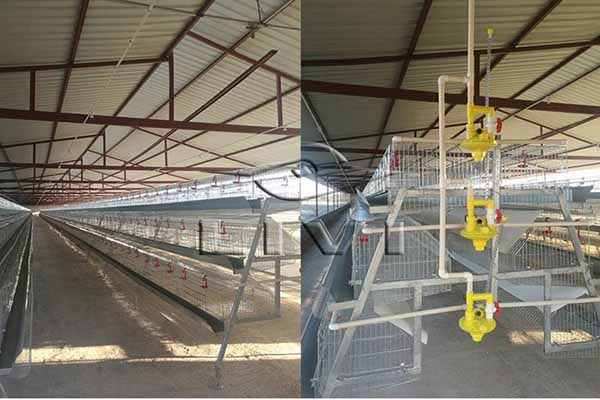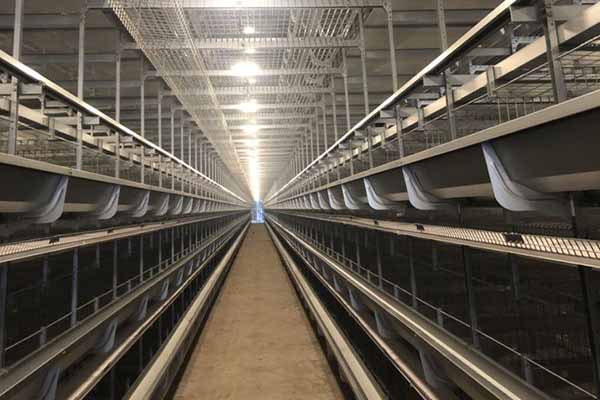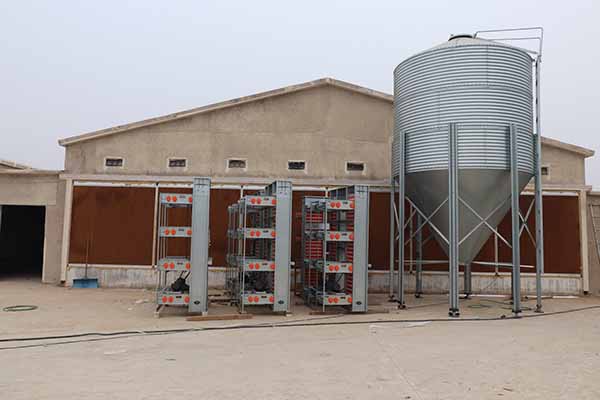Uganda Chicken Farming Equipment Installation: Meeting Acceptance Standards
Time : 2025-06-28
In the dynamic world of poultry farming, Uganda has seen significant growth in its chicken farming industry. This growth has been fueled by the increased demand for poultry products and the adoption of modern farming techniques. One crucial aspect of modern poultry farming is the installation of high-quality equipment. This article delves into the installation acceptance standards for chicken farming equipment in Uganda, providing insights into the technical aspects and the importance of adhering to these standards.

Introduction to Chicken Farming Equipment
Chicken farming equipment is a crucial component in the poultry industry. It includes systems and devices that facilitate efficient and hygienic poultry farming operations. The equipment ranges from housing structures to ventilation systems, feeders, waterers, and automation devices. The right choice and installation of equipment can significantly impact the productivity, health, and welfare of the chickens.
Importance of Equipment Installation in Uganda
Uganda, with its diverse topography and climate, presents unique challenges and opportunities in chicken farming. Proper equipment installation is essential to address these challenges and to optimize farming operations. Here are some key reasons why equipment installation is vital in Uganda:
- Health and Welfare: Good installation ensures that the chickens are in a safe, hygienic, and comfortable environment, reducing the risk of disease and improving their overall well-being.
- Productivity: Efficient equipment installation leads to improved productivity, as it minimizes downtime and maximizes the use of resources.
- Cost-Effectiveness: Proper installation can reduce long-term costs by minimizing maintenance and repairs.
Acceptance Standards for Chicken Farming Equipment Installation in Uganda
Meeting the acceptance standards for chicken farming equipment installation in Uganda is crucial for ensuring the quality, safety, and sustainability of the poultry industry. The following are some of the key standards that should be considered:
1. Design and Engineering Standards
The equipment should be designed and engineered to meet the specific needs of chicken farming in Uganda. This includes considerations for the local climate, the size of the farm, and the breed of chickens being raised. The design should also comply with international poultry farming standards.
2. Material Standards
The materials used in the equipment should be of high quality and resistant to wear and tear. They should also be non-toxic and safe for the chickens. Common materials used in chicken farming equipment include stainless steel, aluminum, and high-density polyethylene (HDPE).
3. Installation Standards
Proper installation is crucial for the equipment to function effectively. This includes ensuring that the equipment is installed in the correct location, that it is level and stable, and th at all connections are secure. Professional installation services should be employed to ensure that these standards are
at all connections are secure. Professional installation services should be employed to ensure that these standards are met.
met.
4. Maintenance and Operation Standards
Equipment should be designed for easy maintenance and operation. Operators should be trained on how to use and maintain the equipment to ensure its longevity and optimal performance.
Challenges and Solutions in Equipment Installation
While meeting the acceptance standards for chicken farming equipment installation is important, there are also challenges that need to be addressed. Some of these challenges include:
- Lack of Professional Installation Services: Not all farmers have access to professional installation services. This can lead to substandard installations, which can compromise the equipment’s performance and the chickens’ welfare.
- High Costs: High-quality equipment and professional installation services can be expensive, especially for small-scale farmers.
- Limited Access to Information: Some farmers may not be aware of the importance of adherence to installation standards and the potential consequences of non-compliance.
Here are some solutions to these challenges:
- Training and Education: Farmers should be educated on the importance of professional installation and the benefits of adhering to the acceptance standards.
- Affordable Solutions: Governments and organizations can provide subsidies or loans to help small-scale farmers access quality equipment and installation services.
- Community Support: Establishing community-based poultry farming groups can help farmers share resources and knowledge, including access to professional installation services.
Conclusion
Chicken farming equipment installation is a critical aspect of the poultry industry in Uganda. Adhering to the acceptance standards ensures that the equipment functions effectively, improves the health and welfare of the chickens, and contributes to the overall success of the farm. By addressing the challenges and seeking innovative solutions, Uganda’s chicken farming industry can continue to grow and thrive.











